Articles and Features
Lost (and Found) Artist Series: Ruth Asawa
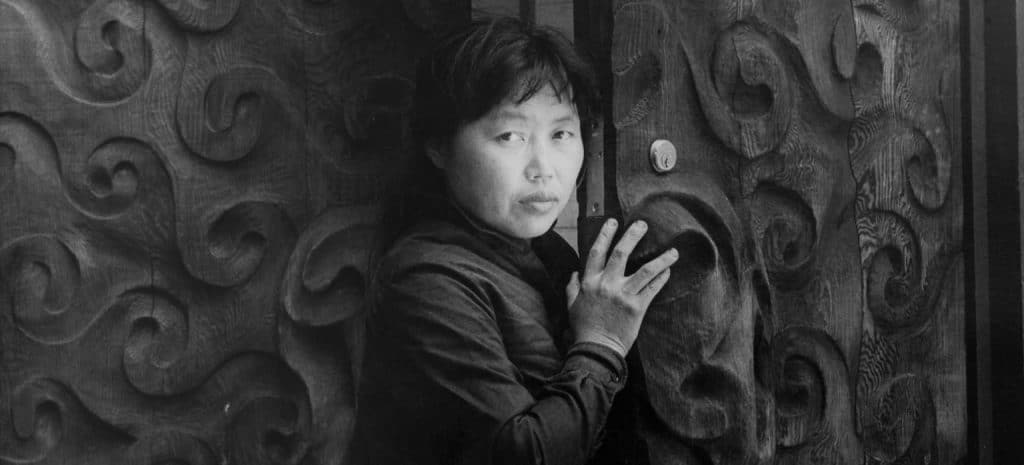
By Shira Wolfe
“I hold no hostilities for what happened; I blame no one. Sometimes good comes through adversity. I would not be who I am today had it not been for the Internment, and I like who I am.”
Ruth Asawa
Who was Ruth Asawa?
Artland’s Lost (and Found) Artist Series focuses on artists who were originally omitted from the mainstream art canon or largely invisible for most of their careers. Ruth Asawa was a Japanese-American artist best known for her extensive body of hanging wire sculptures. Asawa studied at Black Mountain College under Joseph Albers. The artist has been exhibited since the 1950s, but it took until the 2010s for Asawa to receive more large-institutional attention. Her estate has been represented by David Zwirner Gallery since 2017, and in 2018-2019, the Pulitzer Arts Foundation in St. Louis presented “Ruth Asawa: Life’s Work”, her first major museum exhibition in over a decade.
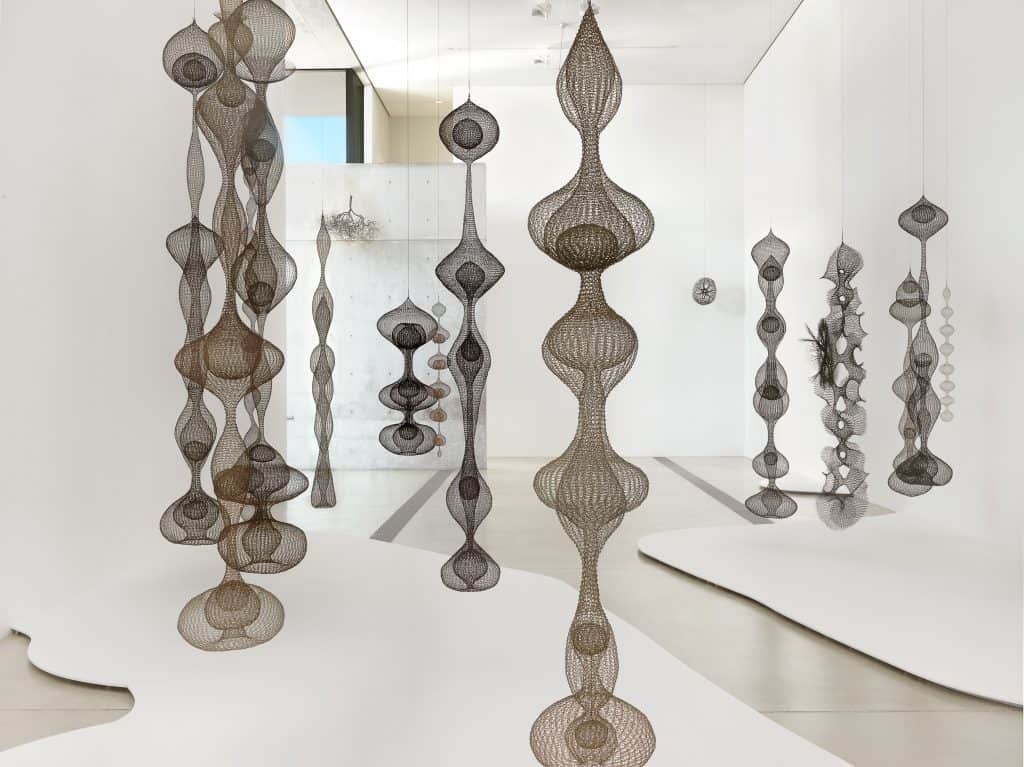
“I was interested in it because the economy of a line, making something in space, enclosing it without blocking it out. It’s still transparent. I realized that if I was going to make these forms, which interlock and interweave, it can only be done with a line because a line can go anywhere.”
Ruth Asawa
Biography of Ruth Asawa
Beginnings in Art
Ruth Asawa first came into contact with the arts in 1942, when she was 16 years old, and her family was detained in internment camps in the United States. In the period of the Second World War, Japanese Americans were considered a threat to the country and held captive in these camps. Because the young Asawa now had much more time on her hands – after all, she had been used to working on her father’s farm for many hours every day – she started spending her time drawing. Later, at Rohwer internment camp in Arkansas, some of Walt Disney’s illustrators were also interned there and would teach art classes to other detainees. Asawa spent several days making art with them. After her release, she enrolled in Milwaukee State Teacher’s College in 1943 but was unable to receive her degree due to hostility against Japanese Americans. So, in 1946, Asawa left to study at the progressive Black Mountain College in North Carolina, the avant-garde experimental arts university, where she was shaped by great artists like Josef Albers.
Black Mountain College
Black Mountain College produced some of the most celebrated artists of the 20th century, attracting artists including the likes of John Cage, Robert Rauschenberg, Cy Twombly, and Willem and Elaine de Kooning. At Black Mountain College, Asawa was greatly influenced by Joseph Albers, Buckminster Fuller, and by the mathematician Max Dehn.
In the late 1940s at Black Mountain, she started experimenting with looped-wire sculptures, which challenged conventional notions of material and form by focusing on lightness and transparency. Inspired by a 1947 trip to Mexico where local craftsmen taught her to make baskets from wire, as well as her lessons in colour and composition from Albers, Asawa started to develop what would become her signature style.
Albers’ classes were all about teaching students to do something with a material which is unique to its properties. It was about respecting the integrity of the materials.
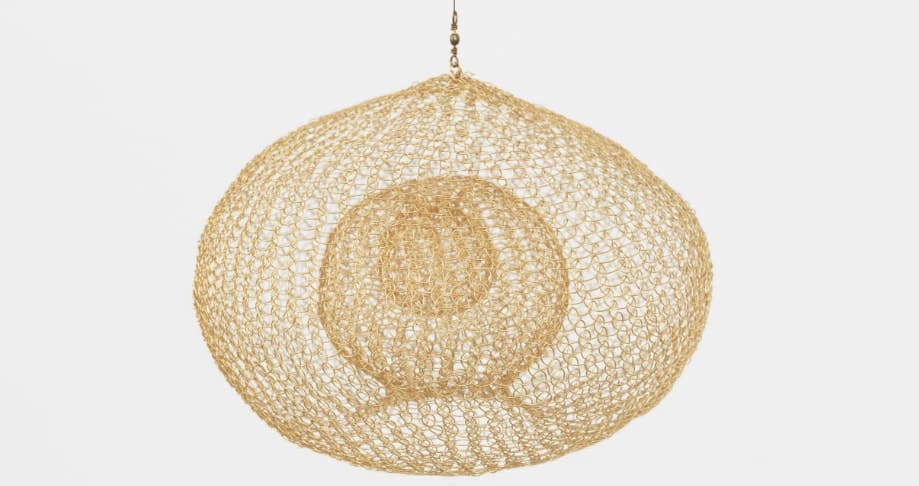
Looped-Wire Sculptures
Throughout her career, Asawa created her looped-wire sculptures in various complex, interwoven configurations. What set Asawa’s sculptures apart from others working in sculpture was their lightness and transparency, as well as their movement, since they were often suspended from the ceiling.
About her explorations with wire sculptures, she said: “I found myself experimenting with wire. I was interested in the economy of a line, enclosing three-dimensional space. I realized that I could make wire forms interlock, expand, and contract with a single strand because a line can go anywhere.”
Asawa made small spheres, but also long, elaborate “form within a form” compositions, creating nested shapes from one continuous line of looped wire. She also worked with hyperbolic shapes, suspended cones and interlocking spheres.
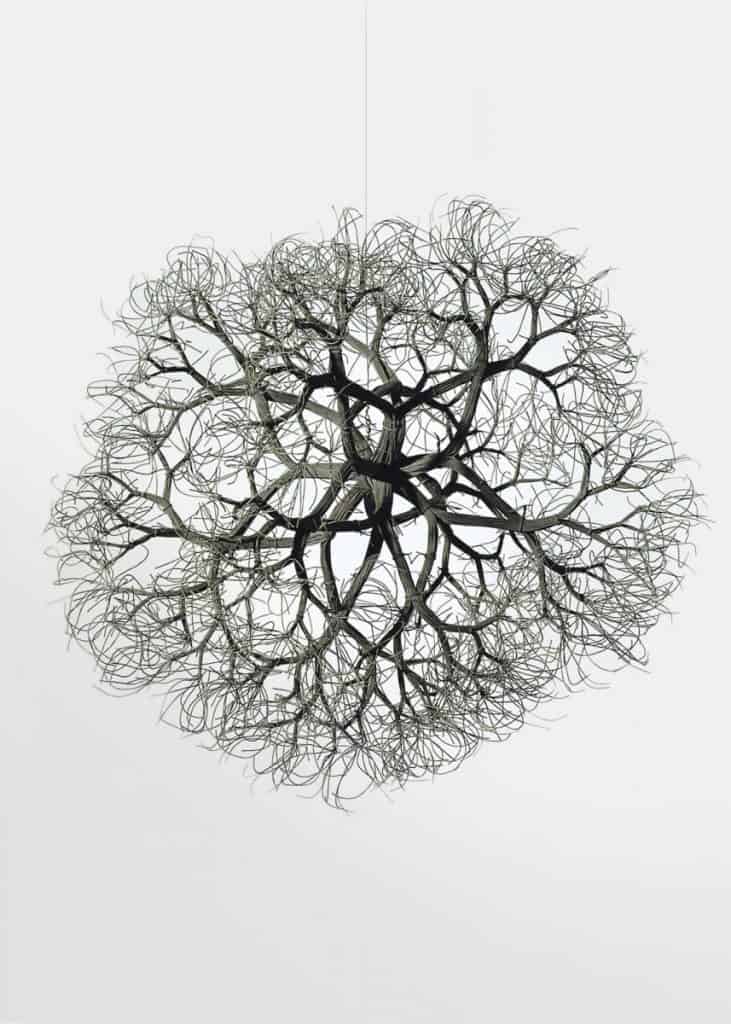
Tied-Wire Sculptures
In 1962, Asawa started a new series of tied-wire sculptures, exploring organic forms and processes. Using industrial wire as a means of sculpting, she created all kinds of hanging and wall-mounted variations on this form throughout her career.
She would often use the words “tree” and “branching form” to describe her tied-wire sculptures. Beginning with a centre stem of 200 to 1000 wires, she would then divide these into branches, inspired by nature. Later, she moved into more abstract forms with geometric centres of 4, 5, 6 and 7 points. As with her other sculptural works, the tied-wire forms gave her the freedom to explore how the relation between inside and outside was interdependent and integral.
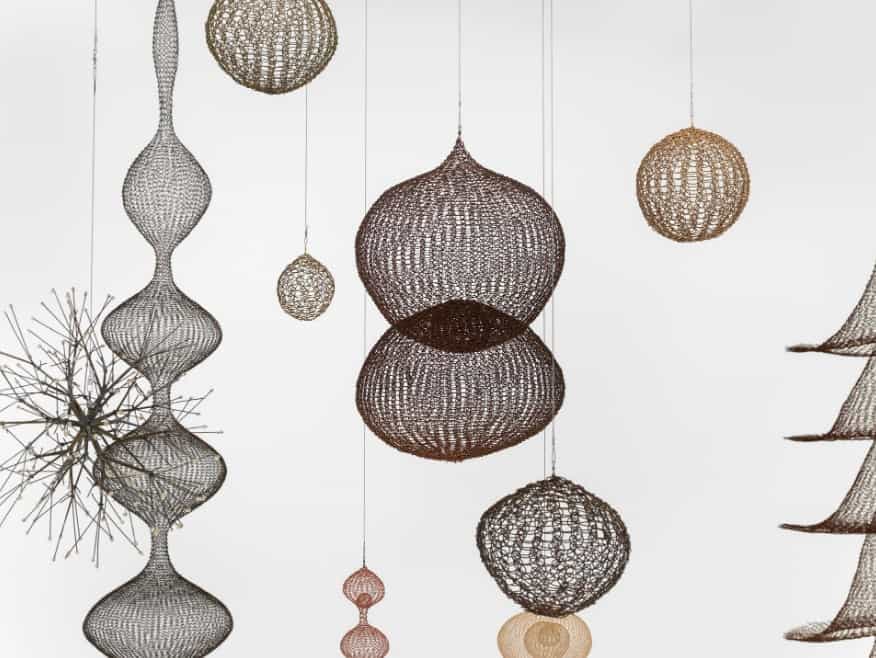
Ruth Asawa Today
Although Asawa exhibited since the 1950s, it took a long time for her art to be truly appreciated and understood on a larger international scale. The past few years have seen a true resurgence in attention for Asawa’s delicate and profound sculptural forms. In 2017, David Zwirner Gallery became the sole representative of her estate and put on the first exhibition dedicated to her work. Since then, the large retrospective “Ruth Asawa: Life’s Work”, organised by the Pulitzer Arts Foundation, was staged in St. Louis in 2018-2019. This was Asawa’s first large museum exhibition in over a decade. Next up, from 10 January – 22 February 2020, David Zwirner will put on the first major exhibition of her works outside the US, at the gallery’s London location. “Ruth Asawa – A Line Can Go Anywhere” promises to be a show to remember.
Where to find Ruth Asawa’s work?
The artist’s works are held in the collections of museums such as The Museum of Modern Art in New York, the J. Paul Getty Museum in Los Angeles, and the de Young Museum in San Francisco, but also in cities across Northern California where the artist was commissioned a number of public sculptures and fountains in the late 1960s. gave Asawa a chance to experiment with new materials and techniques. These public commissions gave the artist the opportunity to experiment with new materials and techniques and to express the theme of inclusion in public spaces: “When I work on big projects, such as a fountain, I like to include people who haven’t yet developed their creative side — people yearning to let their creativity out. I like designing projects that make people feel safe, not afraid to get involved.”
Relevant sources to learn more
To learn more about the life and work of Ruth Asawa, explore:
Ruth Asawa website
David Zwirner Gallery
Explore the work of other contemporary artists whose ideas and practices have greatly influenced the times we live in:
Joseph Beuys
Sophie Calle
Dan Flavin
Guerrilla Girls
Damien Hirst
Ruth Asawa was a Japanese-American artist who studied at Black Mountain College in the 1940s, and became known for her intricate looped-wire and tied-wire sculptures.
Ruth Asawa made her sculptures using continuous interlocking an interweaving lines of looped wire, or working with branching forms inspired by nature, or more abstract forms with geometric centres.
When did Ruth Asawa die?
Ruth Asawa died in 2013.
Where is the Ruth Asawa San Francisco School of the Arts?
The Ruth Asawa San Francisco School of the Arts is a public, audition-based, alternative high school in the San Francisco Unified School District committed to equity and excellence in the arts and academics for all of our community members.